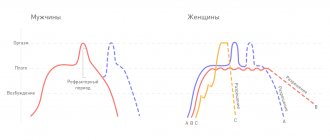Genetically modified foods (GM foods) have always been a hot topic of discussion since the day they were discovered. Although many genetic engineering experiments involving various organisms are already well known to modern science, most of us do not even realize that when we consume meat and dairy products, we also consume GMOs contained in animal feed.
Like 10
21071
What is GMO?
So, the Wikipedia website gives the following definition of GMO: “GMO (genetically modified organism) is an organism whose genotype has been artificially changed using genetic engineering methods. This definition can be applied to plants, animals and microorganisms. Genetic changes are usually made for scientific or economic purposes. Genetic modification is distinguished by a purposeful change in the genotype of an organism, in contrast to the random one characteristic of the natural and artificial mutation process.”
It is worth saying a few words about how the history of GMOs began. 1973 can be considered the year of the birth of genetic engineering. Then, in the laboratory of Stanley Norman Cohen, they learned to “combine and transplant” genes: they began to introduce recombinant circular DNA (plasmids) into E. coli cells [1]. These experiments showed that certain genes included in a plasmid can be easily delivered to another organism where they will work. But this technology was not immediately used in medicine and agriculture: the first recombinant drug appeared in 1982, and the first agricultural crop in 1992. Why was this technology treated with such caution?
Science journalist Asya Kazantseva writes in her book “Someone is Wrong on the Internet”: “Have you ever heard of mobile phone or carbonated drink manufacturers holding scientific conferences on how mobile phones or carbonated drinks can be dangerous? And the creators of GMOs started with this.” The fact is that in 1975, the Asilomar Conference was held in California, at which scientists, together with representatives of the public, discussed the possible risks associated with recombinant DNA and their hosts. As a result, a set of rules was adopted regulating work with genetic constructs of different origins. In particular, genetic engineers were instructed to make maximum use of biological barriers that prevent the spread of recombinant DNA outside the populations of their laboratory hosts, and at the same time to observe precautions approved for working with pathogens. These regulations and, in general, the removal of the discussion outside the scientific community to a certain extent created obstacles to the development of genetic engineering [2].
GMO control and labeling
For all of the above reasons, GMOs are checked many times more thoroughly than other products - for these purposes there is the Codex Alimentarius Commission, which is a joint body of WHO and FAO and is responsible for the selection of standards, principles and recommendations for food products. In 2003, the commission developed principles for analyzing GMO products entering store shelves.
During testing, GMOs are examined for toxicity, allergenicity, stability of the introduced gene, any unintended effects that may result from the introduction of the gene, and other factors.
In Russia, only genetically modified plants that have passed the state registration procedure and have been tested for safety can be used in the food industry. Starting from December 26, 2021, products with GMOs also received a special mark: according to the law in Russia, products containing GMO content exceeding 0.9% are labeled. Why do we need labeling if the products have been tested and are safe? Then, Roskachestvo is confident that the consumer must make his own decision about purchasing products with GMOs.
Recipes from Mother Nature
In fact, we are not the first to come up with GMOs. There are also natural genetic engineers - for example, Agrobacterium tumefaciens (now Rhizobium radiobacter). The fact is that this bacterium has its own circular DNA, Ti-plasmid (from tumor - inducing - oncogenic), a special section of which - T-DNA (from transfer DNA transferred DNA) - can be integrated into the genome of plants, causing rapid division of root cells and the formation of tumors - crown galls, which release nutrients and opines that are valuable for the parasitic bacterium. In addition to T-DNA, the Ti-plasmid contains genes encoding proteins that form a channel between the bacterium and the plant for dragging T-DNA into the plant cell. The bacterium itself and its huge (>200 kb) Ti-plasmid do not penetrate into the cell. So a plant cell, unsuspectingly, includes a fragment of foreign DNA into its genome, and then the cell divides and passes T-DNA to its descendants.
As you know, laziness is the engine of progress. Why invent a bicycle when there is a ready-made natural gene construct. Biotechnologists take the A. tumefaciens plasmid, cut out oncogenes from it and insert the (target) sequences they need. The deceived bacterium conscientiously integrates the modified T-DNA into the plant cell and waits for it to begin dividing and producing opines. But instead, the plant produces what a person needs. For example, using this “insidious” approach, it was possible to obtain drought-resistant corn MON87460. The cspB gene was introduced into this corn, which is responsible for the production of a protein that stimulates the transcription of genes necessary to overcome stress (drought in particular), and most importantly, plays the role of an RNA chaperone, facilitating protein synthesis by “unraveling” interfering secondary RNA structures. The consumer should be pleased that transgenic corn cobs taste no different from regular ones [2]. The bacteria's history of cruel deception is depicted in Figure 1.
Figure 1. How scientists are fooling Agrobacterium tumefaciens. The description is given in the text of the article.
[2]
The main disadvantage of the so-called agrobacterial transformation is the inability to control exactly where in the plant DNA the new construct will be inserted. But now a new technology has appeared that makes it possible to control this process - CRISPR/Cas9 - and we definitely need to focus on it.
Pros and cons of transgenic organisms
GMO foods continue to raise serious concerns among consumers. The main problem is that many believe that added genes from modified plants can just as easily transfer to human DNA .
However, it must be said that mechanisms for the transfer of genetic material have long existed in nature. Genetic engineering has not come up with anything new.
Let's look at the main fears associated with GMOs and try to dispel some myths:
- Impact on humans: Because new genes confer resistance in organisms, there is concern that by consuming modified foods, one of these genes will be passed on to bacteria in our intestinal flora, creating a population of antibiotic-resistant bacteria. However, a person takes quite a lot of antibiotics throughout his life, due to which he forms resistant strains of bacteria. In any case, it has been shown in several studies that the likelihood of such gene transfer is very low and, therefore, the risk is negligible.
- Allergens: Food products obtained from GMO plants contain components that are different from what you are used to. Some believe this may lead to an allergic reaction. However, practice shows that allergies to foods with GMOs are much less common than allergic reactions when eating normal foods.
But GMOs cannot be considered only in light of possible risks, as they bring countless benefits :
- Nutrient Content: There are examples of GMO foods, such as golden rice, that have higher levels of nutrients such as vitamins or other beneficial substances for humans. In the case of Golden Rice, simple foods such as rice helped meet the minimum vitamin A requirements of the poor.
- Organoleptic characteristics: Removing or altering certain enzymes responsible for excessive ripening (and therefore rotting) of some types of fruits or vegetables may change the availability of fresh and tasty fruits and vegetables. This can be especially useful when the product has a long journey to reach the consumer. Without genetic engineering, the fruits have to be harvested unripe, which leads to losses in the taste and quality of the product.
- Pesticides: Genetic engineering is used to create plants that are resistant to many pests and pathogenic bacteria. Using fewer pesticides reduces costs, so GMO products are lower in value.
| The case for GMO foods |
|
| Against GMO products |
|
CRISPR/Cas9. In the image and likeness of the chromosome
This is one of the most fashionable technologies that allows you to edit the genome “online”. The interesting thing is that we also borrowed this system from bacteria. Let's say a few words about the history of its discovery.
In 1987, Japanese scientists discovered regions with a regular structure in the genomes of bacteria - short identical sequences alternated with unique fragments that had nothing in common among different bacteria, even of the same species. CRISPR ( clustered r egularly interspaced s hort palindromic repeats ) 3 ]. It turned out that the CRISPR system, surprisingly, plays the role of acquired immunity in bacteria. If a virus (phage) penetrates a bacterium, it cuts out a fragment of viral DNA and inserts it into its own genome, namely into the CRISPR locus. This is how a spacer is formed, and at the same time another repeat is formed, separating the new spacer from the previous one. Using the spacer, the bacterium then builds an RNA probe (in scientific terms, an RNA guide), which connects to the Cas protein and floats in the cell in search of complementary nucleic acids (protospacers). If any are found, that is, the same phage invades again, the Cas scissor protein, an endonuclease, begins to work, which cuts the recognized sequences and, therefore, blocks the reproduction of the virus [2]. In other words, if a bacterium repeatedly encounters a virus, a fragment of which is embedded in its genome, it will be resistant to this infection.
Type II systems are the simplest of the CRISPR/Cas systems, where Cas9 serves as the effector (target-destroying) protein (Fig. 2). This mechanism is characteristic, for example, of the bacterium Streptococcus pyogenes. In addition to Cas effectors, bacterial immune control usually involves the “patrol” proteins Cas1 and Cas2, which together recognize the cell border violator and integrate its fragment into the very beginning (closer to the promoter) of the CRISPR locus - “as a memory.” In type II systems, Cas9 apparently also participates in the process of acquiring spacers, helping Cas1/Cas2 select the most suitable fragments [4].
Figure 2. Simplified representation of the functions of the CRISPR system components. The description is given in the text of the article.
website dailycal.org, picture adapted
From the above, it becomes clear why CRISPR immunity is adaptive: it improves and learns to resist new types of infection. This is also emphasized by the decrease in the efficiency of spacers as they move away from the promoter of the CRISPR locus: if many generations of bacteria have not encountered a particular agent for a long time, the “strength of immunity” to it decreases. CRISPR is an interesting example of Lamarckian evolution: events in an organism's life directly affect its DNA, changing it so that the organism becomes more fit [3].
Let's look at a specific example of how bacteria fight viruses. For example, the bacterium Streptococcus thermophilus is used to produce lactic acid products, but, unfortunately, it suffers from various viral infections. It is no coincidence that key experiments to clarify the function of CRISPR systems were carried out on this model organism. If a live culture of S. thermophilus was infected with bacteriophages, then most of the bacteria died, but a very small part survived. How did the survivors differ from the original culture? It turned out that their genome became 0.01% longer due to the fact that 1–4 new fragments (spacers) were added to the CRISPR sequence. When this culture was re-infected with the same viruses, all clones survived. It’s as if, having had a viral infection, the bacterium has become a little more experienced and has written down something important about this virus in its “medical record”, and now it is not afraid of such an infection. If scientists specifically cut out small fragments from the viral genome and inserted them in the form of new spacers, then the cell turned out to be immune to the original virus, even if it had never encountered it before.
This series of simple and elegant experiments on S. thermophilus completely confirmed the hypothesis of the immune function of CRISPR systems. Thanks to the polar manner in which new spacers are incorporated, CRISPR cassettes can literally be read as a history of the relationship between prokaryotes and their parasites at a certain evolutionary interval. CRISPR is not only immunity, but also a memory of the recent victories of the prokaryotic cell [5].
What practical benefit could a person derive from this system? How does it generally work in eukaryotic cells? If you simply launch CRISPR/Cas9 into a cell, the system will cut both strands of DNA at the location indicated by a specially designed guide RNA, but the cut will be repaired by normal cellular repair machinery - through non-homologous end joining (NHEJ) or homologous recombination - if there is a template with flanks complementary to DNA sections on both sides of the break, “pattern darning” will occur. This means that, depending on a person’s goals, it is possible to place a deletion in the right place—to “turn off” a problematic area of the genome—or to “substitute” a matrix with the desired properties to simply replace, for example, a mutant, pathological version of a gene with a normal one.
general information
Nowadays, more and more people are trying to eat healthy and pay increased attention to the quality of the products they eat.
This is especially true for parents, since the child’s health directly depends on his diet. In the wake of the popularity of the principles of a healthy lifestyle, so-called pure organic bioproducts have also become in great demand. The inscription on the packaging “non-GMO” has become a kind of sign of high quality, safety and naturalness.
What actually lies under this abbreviation GMO and how is it translated into simple human language? Are genetically modified foods really that bad for our health? We will try to answer these questions further.
MCR, pros and cons
Figure 3. History of moratoriums in biology. In 1975, a moratorium was introduced on recombinant DNA research, in 1997 on human cloning, and in 2012 on experiments to change the properties (virulence) of the avian influenza virus.
[8]
And that is not all. It is possible to make the cell perceive the “repaired” chromosome as a model for repairing the second chromosome. In 2015, scientists from the University of California, to test the method, used the CRISPR/Cas9 cassette itself as a “patch,” which was then expressed by the X chromosome of flies and modified the homologous chromosome. As a result, already altered chromosomes were passed on to the offspring, and the CRISPR/Cas9 insertion “self-reproduced” from generation to generation, replacing normal alleles. This method is called “mutagene chain reaction” (MCR) [6].
In the same year, Liang and co-authors conducted work on triploid (obviously non-viable) embryos with beta thalassemia. Of the 86 CRISPR-edited embryos, only 71 continued to develop, and only four of them had the gene edited correctly [7]. This article caused a real explosion of controversy on the topic of whether it is even ethical to conduct such research.
In Nature, Edward Lanphear, one of the researchers of ZF nucleases (scissor proteins containing a DNA-binding zinc finger domain), and his colleagues called for a moratorium on any experiments involving gene editing in human embryos or germ cells: “Is it worth testing fate, even if the therapeutic effect of germ cell modification is noticeable? We are ready to enter into an open discussion on further research in this area.” By the way, biology has already written a whole history of moratoriums on various studies (Fig. 3). But let's get back to CRISPR. Some time later, a group of scientists proposed avoiding attempts to modify human germline cells, but supported the idea of working with human cells if they are not involved in the development and maintenance of pregnancy (for example, somatic cells) [8].
Now it is worth touching on the prospects for using this technology. MCR could, for example, make it possible to create mosquitoes that are unable to transmit malaria and dengue fever. It will be possible to quickly breed mouse strains with multiple mutations for laboratory research without wasting time on thorough screening [6]. In addition, there is work on testing CRISPR/Cas9 in mice for the treatment of Duchenne muscular dystrophy [9]. However, there are concerns that we simply do not know about the possible side effects of such changes in germ cells and embryonic cells, which is why the moratorium has been proposed.
How to identify GMO products?
GMO foods must be labeled if they are “substantially different” from their conventional counterpart. For example:
- GMO canola oil with more lauric acid than traditional canola oil will be labeled as “laurate canola oil”;
- GMO soybean oil with high oleic acid content must be labeled “high oleic soybean oil”;
- GMO soybean oil with high levels of stearidonic acid, which does not occur naturally in the oil, should be labeled as “soybean oil stearidonate.”
The new national labeling standard for bioengineered foods will go into effect on January 1, 2021. Under the new rules, all products containing genetically engineered ingredients will be labeled as “bioengineered” or “bioengineered.”
Why are GMOs useful?
Let us limit ourselves to some striking applied examples related to ecology, nutrition and materials.
"Eco-pig"
At first glance, it may seem that pigs, phosphorus and environmental disasters have nothing in common. But that's not true. There is a serious agricultural problem: pigs cannot absorb most of the phosphorus in feed, since it is presented in the form of phytates, salts of phytic acid. Undigested phosphorus in pig manure eventually ends up in water bodies, where algae begin to rapidly multiply - they happily eat phytates. Due to the toxic metabolic products of algae, fish and other aquatic organisms die. All in all, a disaster. But genetic engineers proposed the Eco-pig project. Unfortunately, it has so far remained a project that has not entered the market. But the idea is very beautiful. We are talking about genetically modified pigs that can absorb phytates. The idea was to insert into the pig genome a gene that encodes an enzyme necessary for the breakdown of phytates (and it can be taken from the same E. coli) [10]. Let's hope that someday scientists will make life easier for pigs 
Steel goat, transgenic cotton, super sweet and kosher cheese
Now let’s look at examples of useful GMOs that are in no way related to each other: they are simply beautiful, and I wanted to talk about them. In 2002, an article appeared in Science that genetically modified mammalian cells could produce spider webs. The Canadian company Neхia bred goats with the spider web protein gene inserted into their genome. It turned out that the milk of such goats can be used to produce biosteel, which is even stronger than Kevlar, the material from which modern body armor is made [10].
But genetic engineering helps to create not only new materials, but also to successfully grow old ones. Back in 1997, China began growing genetically modified cotton, equipped with a gene from the bacterium Bacillus thuringiensis. The Cry1Ac protein encoded by this gene is toxic only to the caterpillars of some butterflies and appears harmless to all other animals, including humans. This led to a decrease in the population of cotton bollworm, a dangerous pest of many crops. As a result, not only cotton producers benefited, but also farmers growing soybeans, corn, peanuts and various vegetables [11].
As for sweets, there is a plant called Thaumatococcus daniellii, and it has a gene that codes for a protein called thaumatin, which is thousands of times sweeter than sugar! Work is currently underway to create microorganisms and plants that produce this protein. In addition to sweetness, thaumatin increases plant resistance to a number of infections [10].
And finally, about kosher cheese. It is known that an enzyme isolated from rennet, one of the sections of the digestive tract of ruminants, was previously used to prepare ordinary cheese. But now biotechnologists have inserted the genes for rennet enzymes into the genome of bacteria, making it possible to produce kosher cheese. This seems to be a rare example of collaboration between science and religion [10].
Genetically modified foods are a reality
Genetically modified foods have become a part of our lives and are increasingly used in industrial food production.
Let's look at some examples of GMO food products :
- Herbicide-resistant soybean
- Insect-resistant corn
- Rice with a high content of vitamin A. This achievement made it possible to solve the problem of vitamin A deficiency in the population of countries that consume a lot of rice.
- Potatoes have a sweeter taste due to the absence of the enzyme that converts sucrose into starch.
- Tomatoes , rich in lycopene, are a very important antioxidant.
- Coffee with low caffeine content or improved aromatic properties.
Someone might say: “We are surrounded by GMO products!” However, it is enough to read the labels carefully to find out whether the product contains GMOs or not!
Precautionary measures
On the one hand, the above examples of the usefulness of GMOs are “a grain of sand like in sea waves, like a small spark in eternal ice.” But on the other hand, any technology has its own problems related to ethical and security issues. We have already discussed a moratorium on the use of CRISPR/Cas9 in human embryos. Experiments on monkeys have shown that out of ten embryos edited using this system, unfortunately, no more than half are born [8]. As for the use of GMOs, the biggest concern here is reactions to the product, which are not always possible to predict. For example, in 1992, the breeding company Pioneer developed GM soybeans by adding the Brazil nut gene to it, thereby eliminating the natural deficiency of the amino acid methionine in soybeans. Such beans were intended primarily for those people for whom soybeans are a staple food. But it soon turned out that Brazil nuts cause allergies in a small percentage of people. Accordingly, such GM soy can also cause allergies [12].
The above facts do not detract from the advantages of genetic technologies, but indicate that any method requires competent and careful use. Therefore, I would like to end the article with the words of molecular geneticist George Church from Harvard Medical School in Boston, who believes that a de facto moratorium should be imposed on all technologies until their safety is proven: “The challenge is to prove that the benefits of the technology are greater than the risks " [8].
Summarize
GMOs are foods that have been modified using genetic engineering.
A large number of products in your local supermarket contain GMO ingredients because they are easier and more economical for farmers, making them cheaper for the consumer.
Foods grown using GMO methods include corn, soybeans, canola, sugar beets, alfalfa, cotton, potatoes, papayas, pumpkins and several varieties of apples.
Although current research shows that GMO foods are safe to consume, some people are concerned about their potential health effects. Due to the lack of long-term studies in humans, more research is needed.
Literature
- Molecular cloning, or how to insert foreign genetic material into a cell;
- Kazantseva A. Someone is wrong on the Internet! M.: CORPUS, 2021. - 376 pp.;
- CRISPR systems have been found that use reverse transcription;
- Heler R., Samai P., Modell J. W., Weiner C., Goldberg G. W., Bikard D., Marraffini L. A. (2015). Cas9 specifies functional viral targets during CRISPR-Cas adaptation. Nature. 519 (7542), 199–202;
- CRISPR systems: immunization of prokaryotes;
- Mutagenic chain reaction: genome editing on the verge of science fiction;
- Liang P., Xu Y., Zhang X., Ding C., Huang R., Zhang Z. et al. (2015). CRISPR/Cas9-mediated gene editing in human tripronuclear zygotes. Protein Cell. 6, 363–372;
- Vogel G. (2015). Embryo engineering alarm. Science. 347, 1301–1301;
- Cure Duchenne muscular dystrophy: group competition, unity of methods;
- Panchin A. Sum of biotechnology. M.: CORPUS, 2021. - 432 pp.;
- Elements: “Transgenic cotton helped Chinese peasants defeat a dangerous pest”;
- Matt R. Genome. Autobiography of a species in 23 chapters. M.: EKSMO, 2015. - 432 p.











